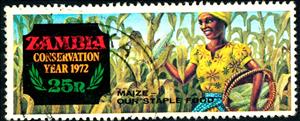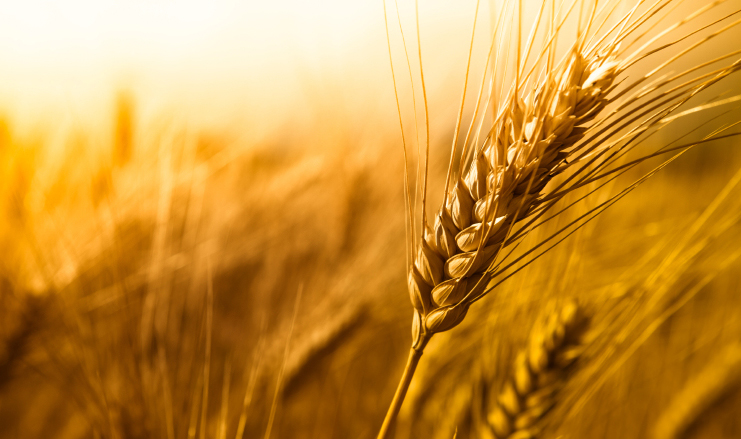Stamp: Maize (Zambia 1972)
Maize (Zambia 1972)
30 June (Zambia ) within release Conservation Year (2nd Issue) goes into circulation Stamp Maize face value 25 Zambian ngwee
| Stamp Maize in catalogues | |
|---|---|
| Michel: | Mi:ZM 84 |
| Stanley Gibbons: | Sg:ZM 175 |
Stamp is horizontal format.
Zambian woman in corn fieldAlso in the issue Conservation Year (2nd Issue):
- Stamp - Soil Conservation face value 4;
- Stamp - Forrestry face value 10;
- Stamp - Maize face value 25;
Stamp Maize it reflects the thematic directions:
A crop is a plant that can be grown and harvested extensively for profit or subsistence. In other words, crop is a plant or plant product that is grown for a specific purpose such as food, fibre or fuel.
When plants of the same species are cultivated in rows or other systematic arrangements, it is called crop field or crop cultivation.
Agriculture is the cultivation and breeding of animals, plants and fungi for food, fiber, biofuel, medicinal plants and other products used to sustain and enhance human life.[1] Agriculture was the key development in the rise of sedentary human civilization, whereby farming of domesticated species created food surpluses that nurtured the development of civilization. The study of agriculture is known as agricultural science. The history of agriculture dates back thousands of years, and its development has been driven and defined by greatly different climates, cultures, and technologies. Industrial agriculture based on large-scale monoculture farming has become the dominant agricultural methodology.
Environmental protection is the practice of protecting the natural environment by individuals, groups and governments.Its objectives are to conserve natural resources and the existing natural environment and, where it is possible, to repair damage and reverse trends.
A people is a plurality of persons considered as a whole, as is the case with an ethnic group or nation. Collectively, for example, the contemporary Frisians and Danes are two related Germanic peoples, while various Middle Eastern ethnic groups are often linguistically categorized as Semitic peoples.




